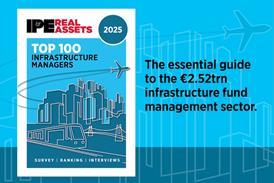Despite the outbreak of the Covid-19 pandemic, global real estate investment managers raised at least €123 bn of new capital for non-listed real estate in 2020, according to the Capital Raising Survey 2021, published by ANREV, INREV and NCREIF.

However, total capital raised in 2020 fell relative to the record high of €196 bn attained in 2019, largely as a consequence of the pandemic. Nearly a third of managers said they hadn’t raised any new capital in 2020, with many citing a lack of available product as the main reason.
The number of vehicles raising capital also dropped year-on-year from a record 982 in 2019 to 699 in 2020.
Despite this slowdown, on average the capital raised by individual vehicles was higher than in 2019 except for those with a North American regional strategy. The average capital raised for each vehicle with a global strategy was €0.8 bn versus €0.5 bn in 2019.
Similarly, investment activity remained robust with 52%% of capital raised in 2020 already deployed.
Furthermore, more than two thirds (76%) of investment managers expect an increase in capital raising activity over the next two years.
The report found that a significant proportion of the new capital raised – 41% – was allocated to vehicles targeting Europe, while 24% was destined for vehicles aimed at North America, and 17% assigned to Asia Pacific vehicles. The remaining 17% was targeting global strategies and tended to raise a notably larger amount of capital per vehicle than the 2021 average.
Of the total capital raised, a record 60% (€74 bn) was destined for non-listed real estate funds, emphasising the continuing strong appetite for these vehicles among institutional investors around the world.
Managers based in Asia Pacific and Europe showed the strongest domestic bias, allocating 87% and 86% of the equity raised to their home territory, respectively. Investors in North America once again demonstrated the most robust preference for cross-border reach, with 32% of new capital raised targeting global strategies, 43% earmarked for their home region, and the remainder split between Europe (19%) and Asia Pacific (6%).
European market eyes non-listed funds and debt products
A total of €51 bn was raised for European strategies in 2020, with non-listed funds again featuring prominently, attracting 39% of all new capital raised in the region. Separate accounts were the second most important target vehicle, securing 23% of the new equity.
However, non-listed debt products accounted for the largest increase in capital raised for European strategies, jumping from 4.6% in 2019 to 19% in 2020, with a strong preference for senior debt. This continued interest in debt products from institutional investors complements the report’s findings of a strong focus on core strategies – be it debt or equity non-listed real estate. Together, these data echo general investor preferences for lower risk strategies expressed in the 2021 Investment Intentions Survey.
For the first time since 2015, insurance companies became the most important source of capital for vehicles with a European strategy, accounting for 37% of the total capital raised in the European region.
Investors opt for older vintages
Over half (56%) of the new capital raised for European strategies was allocated to funds with vintages preceding 2011. While newly launched funds – with a 2020 vintage – represented only 4% of the new capital raised.
Interestingly, funds launched in 2019, accounted for 14% of the total capital raised in 2020. This marks the first time, since the series began in 2011, that funds raised more capital in their second year than during their first year. This is likely due to several factors, including a lack of suitable products for investment.
Residential secures the top spot for sector allocations in Europe
Last year, the largest proportion of capital raised for single-sector strategies was targeted towards residential/multi-family apartments (38%). This was followed closely by industrial/logistics (33%), and then offices (16%). As expected, it was another difficult year for funds offering retail strategies, which accounted for just 8% of new capital raised in 2020.
The focus on residential/multi-family apartments goes hand in hand with the strong investor demand for the sector off the back of its stable income driven performance in markets such as Germany and the Netherlands, where it has been an entrenched part of the market for a long time. This is complemented by the growth of institutional investor interest in the sector in those European markets where residential has been less of an established institutional asset class until recently.










